Ouija Board: The Origins and Cultural Impact of the Game
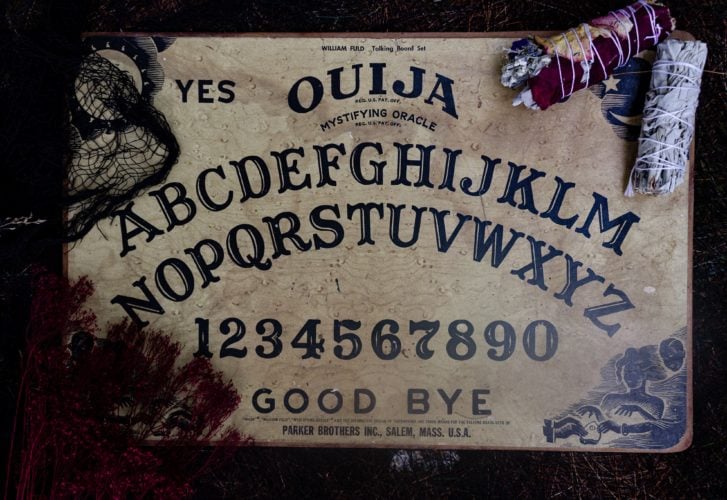
Ever wondered where the classic sleepover game and horror movie prop came from? The Ouija Board in its current form has been around since 1891. But the fascination with the afterlife that inspired it has been around for centuries.
Let’s take a look at where the Ouija Board came from. How has its image has changed over time? And how does it influence cinema?
Spiritualism in the United States
Spiritualism manifested in English-speaking countries in 1840. But the concept of communicating with an afterlife or spirit world was not new at that time. The specific type of spiritualism that inspired the Ouija Board says that the spirits of people that have passed in this world are still very much alive in the spirit world or afterlife.
Spiritualists are people who can communicate with the dead. And this skill is seen as important, not only because you can get closure from a deceased family member. But because spirits are advanced beyond humans in the knowledge of the universe. By communicating with these spirits, you can learn more about the world and expand your mind.
Some people latched onto this idea at this time because, during the 19th century, death was rampant in America. Whether it was relatives dying on the battlefield of the Civil War or women and children not surviving childbirth. Or widespread disease taking lives indiscriminately, the average lifespan was relatively low.
Spiritualism gave people the ability to reconnect with loved ones gone too soon. In this era, spiritualism wasn’t seen as spooky or evil; it was just a way to reach out to those you can no longer see.
The Origins of the Ouija Board
Not everyone saw spiritualism as a chance to contact the dead to gain inner peace and closure. Some saw it as a way to get rich quickly.
Before the first official Ouija Board was released, talking boards were popular ways to contact the spirit world. The small board had letters, numbers, and a small cursor to point to the spirit’s answer. But there was a lot of variety between the way the board operated. These became popular in the late 1880s, and businessman Charles Kennard had an idea.
This idea was “what if I stole the idea of the talking board, changed it up a bit, and marketed it better?”
He teamed up with E.C. Reiche, a Prussian immigrant who was an undertaker and coffin manufacturer. While they worked together to make the original boards, Kennard left Reiche’s name off the business plans he pitched to investors. Kennard is credited as the sole inventor of the Ouija Board.
Despite his repeated efforts, Kennard had difficulty drumming up interest in the board among investors. However, he finally found an investor in Elijah Bond, an attorney. Together, they formed the Kennard Novelty Company in 1890, bolstered by the funds of William H.A. Maupin, John F. Green, Colonel Washington Bowie, and the help of Bond’s sister-in-law Helen Peters, a medium.
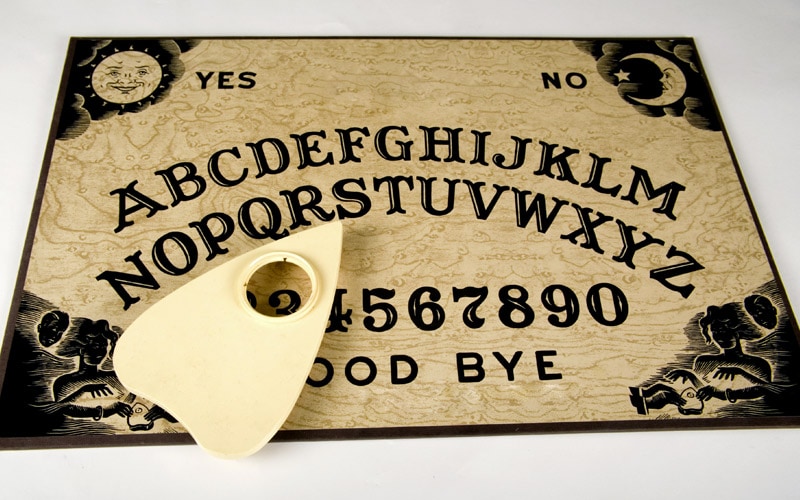
The Early Years
According to the lore they created, the Ouija Board came up with its own name after they asked the board what to call it. The board also told them that the word meant “Good Luck.”
Kennard was removed from the business in 1891, which changed its name to The Ouija Novelty Company in 1892. William Fuld, who had worked as a foreman in the Kennard Novelty Company, became the supervisor.
Fuld filed the patent for the company’s talking board and squashed any of Kennard’s attempts to create a competing board. Fuld is known as the Father of the Ouija Board, even though he never invented it. It’s fitting, considering Kennard tried to steal all the credit in the beginning.
Lots of Drama Unfolded…
Needless to say, there were ensuing lawsuits and lots of drama. Fuld’s brother, Isaac, was cut out of the company. Isaac became so angry and resentful that he had his baby daughter exhumed and relocated from the Fuld family gravesite. 96 years would pass before the two sides of the family would speak again.
In 1927, William Fuld ended up suffering a fatal accident at his Harford Avenue factory. He was overseeing the installation of a flag when an iron railing gave way and fell of the roof. Fuld fell to the ground, and while being transported to the hospital, a fractured piece of rib pierced his heart. He would pass away upon reaching the hospital.
The legend has it that the Ouija board itself recommended that Fuld build the factory.
Decades after Fuld’s death, Fuld’s family sold the board in 1966 to Parker Brothers for $1 million. It was the most a game had ever been purchased for at that time.
Another creepy fun fact, Parker Brothers moved the base of operations to Salem, MA, for its first year of ownership.
How Does A Ouija Board Work?
The first Ouija Boards hit the shelves in 1891 and you could purchase one for $1.50. You could use it as a way to contact a relative. Or you could use it as a fun activity at a party.
So how does it work? An Ouija Board worked when someone asked it a question. And at least two people put their hands on the planchette.
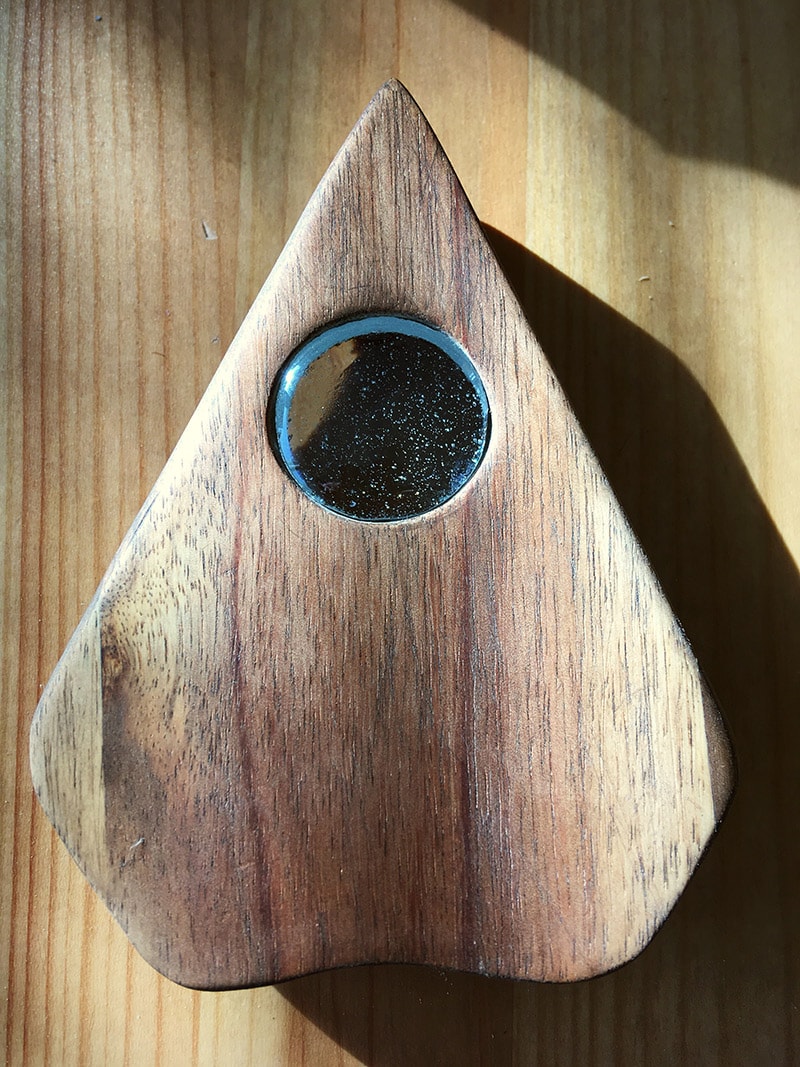
The planchette is a small heart-shaped wooden piece supported by casters that move “on its own” across the board. It is guided by spirits to an answer. It points to letters of the alphabet, numbers, and the words “yes” and “no” to spell out words and give answers to the questions the players ask.
The board works based on the ideomotor effect, a phenomenon studied in psychology. It’s when muscle movements happen involuntarily, which is used to explain how a spirit can control a planchette or a subject’s hand for automatic writing.
So while some may ask “Are Ouija Boards real?”, the inventor and all the following owners of the company will say “yes – a real way to make money.”
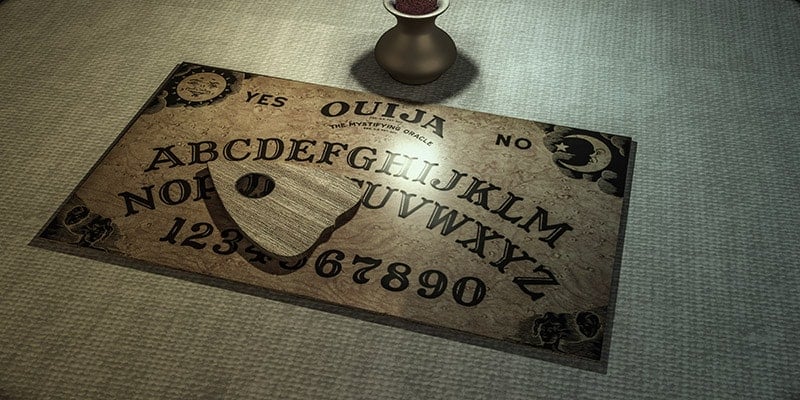
Crazy News Stories Inspired By The Board
There are quite a few stories of an Ouija Board inspiring people to do crazy things – the worst being murder.
In 1923, May Murdoch shot her husband three times. Why? The Ouija Board told her he was unfaithful. Mr. Murdoch would later die in the hospital.
Sadly, stories like this popped up more than a handful of times in the early 1900s.
The Ouija Board in Pop Culture
Before The Exorcist made the Ouija Board a tool of the devil, authors used it as divine inspiration for their craft. Pearl Curran and James Merrill, Pulitzer Prize-winning poet of The Changing Light at Sandover, were known to consult the board to get inspired during a bout of writer’s block.
And the Ouija Board did not have the same malevolent connotations that culture has ascribed to it today. While some people call it witchcraft and think it’s a vessel for evil, its early appearances on TV shows contradict that cultural perception. It was featured in the first season of I Love Lucy as a comedic stunt Lucy pulls to find favor with a businessman.
The horror film series The Exorcist, based on the 1971 novel of the same name by William Peter Blatty, marks a pivotal moment in the board’s identity. While it’s not the first movie to use the Ouija Board as a vessel for possession – The Uninvited premiered in 1944 – it had the most cultural impact and staying power.
Regan, a 12-year-old girl, uses an Ouija Board at the beginning of the film. And she becomes possessed by a demon through her use of the board. The note at the beginning of the film said it was “based on a true story” added to the fear of the board.
The series went on to total of six films and a sequel series and the Ouija Board lost its image as a light-hearted game.
The film premiered in 1973, and America was already feeling uneasy about cults, witchcraft, and Satanism. The Manson cult members had just been put behind bars. Not to mention, serial murderers like the Zodiac and Alphabet killers had the country on edge.
The Exorcist & Witchboard
Once The Exorcist cemented the Ouija Board as a tool for demonic possession, it found its place in the horror genre. The film Witchboard premiered in 1986 and leaned into the connection between Ouija Boards and evil.
In this movie, the board allows a spirit named David to wreak havoc on a group of people, ending in multiple possessions and deaths. The movie ends when someone shoots a bullet through the board. While two of the characters get their happily ever after, the movie ends on a cryptic note as the landlady finds the damaged board and wonders aloud if the board still works. After she throws it in a box, the planchette answers her question as it moves to “yes.”
Spooky.
While the image of the board may have changed, the number of sales didn’t. Being branded as a tool of the devil only made the board more interesting to rebellious teens, and it became a staple of sleepover seances.
The Ouija Board finally got a movie with its own name in 2014, and a prequel entitled Ouija: Origins of Evil was released in 2016.
Once again, the Ouija Board enables possession to occur, leaving most of the cast dead by the end of the film.
In Conclusion
Ouija Boards have been around for centuries and have been used for a variety of purposes. Some people believe they can be used to contact the dead, while others think they can be used to summon demonic spirits or access other dimensions.
Whatever your belief may be, there’s no denying that Ouija Boards are intriguing! And they continue to fascinate us all.


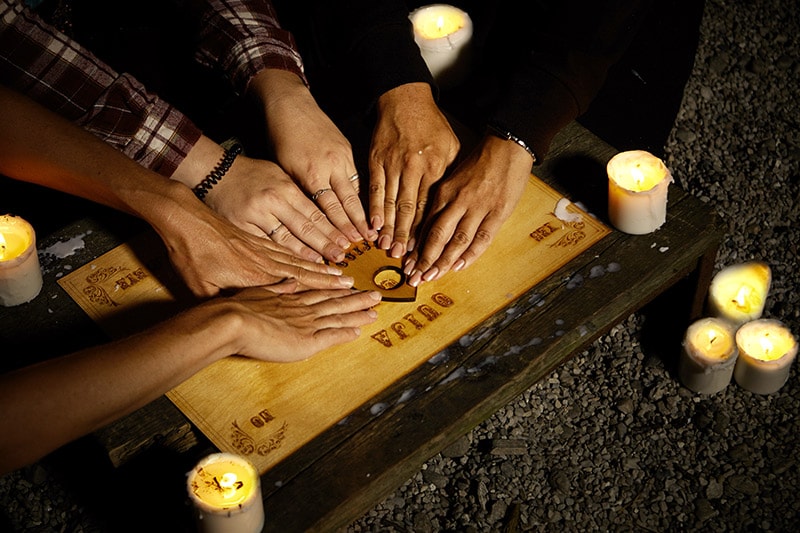
Responses